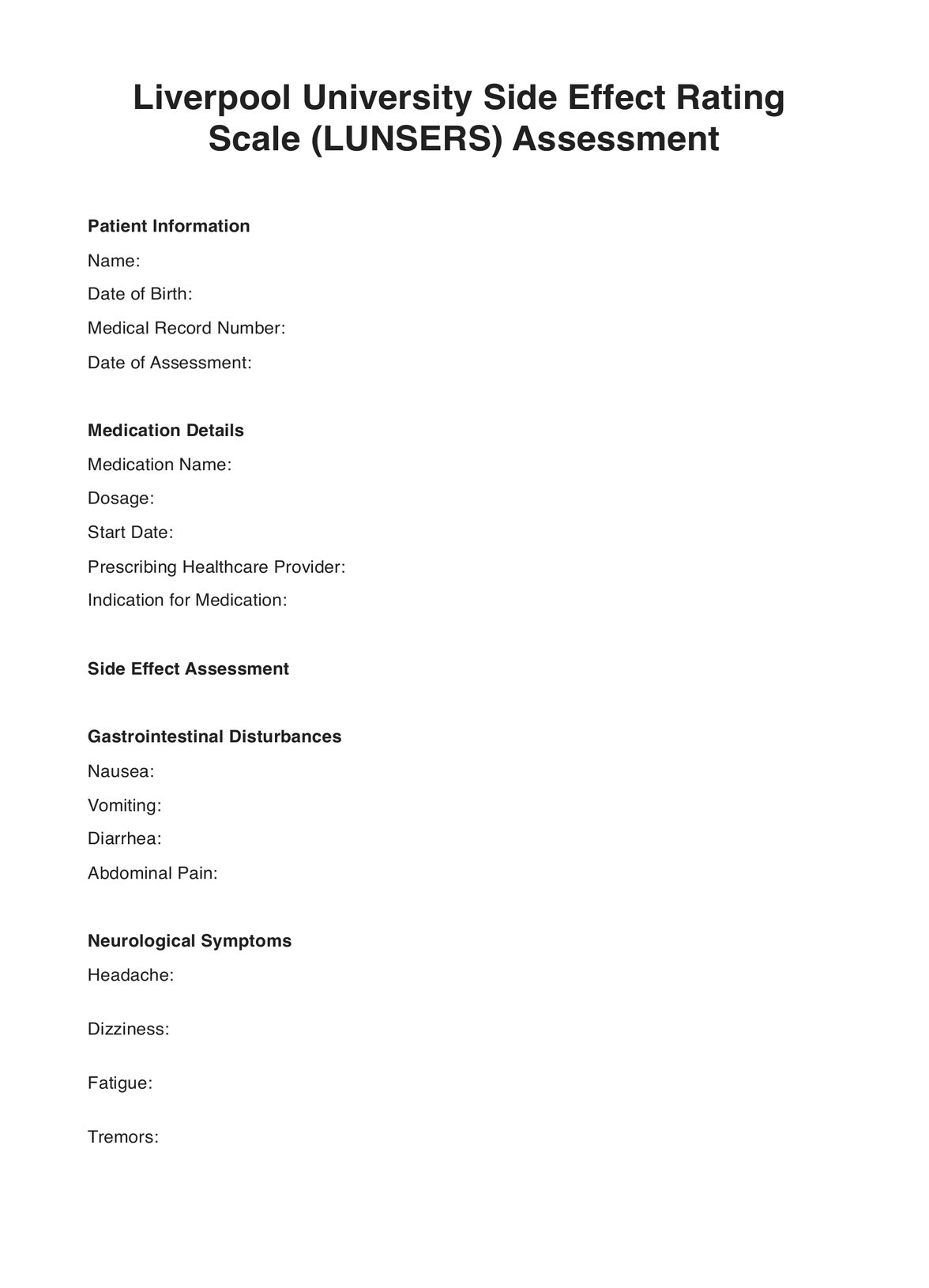The time to complete LUNSERS varies based on the number of side effects being assessed and the complexity of the patient's condition. Generally, it can take around 10 to 15 minutes to complete the assessment.

Liverpool University Side Effect Rating Scale (LUNSERS)
Stay informed about potential medication side effects with Liverpool University Side Effect Rating Scale (LUNSERS) to assess and manage any adverse reactions.
Liverpool University Side Effect Rating Scale (LUNSERS) Template
Commonly asked questions
The LUNSERS scale provides numerical scores for each assessed side effect. Higher scores indicate more severe side effects. Healthcare professionals can analyze the total and individual scores to understand the overall impact of medication on the patient and make treatment decisions accordingly.
LUNSERS is used during various stages of patient care, including initial medication assessment, ongoing monitoring, medication changes, and multidisciplinary collaboration. It helps in identifying, assessing, and managing medication-related side effects effectively.
EHR and practice management software
Get started for free
*No credit card required
Free
$0/usd
Unlimited clients
Telehealth
1GB of storage
Client portal text
Automated billing and online payments











